Yesterday the great Al Jaffee turned 95. He's been contributing to Mad Magazine for a mere 61 years as the master of the "Fold-In," a few of which are presented below. Still active and charming as ever, Mr. Jaffee is one of the few people who can genuinely be said to speak with a "stentorian" presence, and I would just sit and listen to him read the phone book.
Viewing: Blog Posts Tagged with: Paul Fleishman, Most Recent at Top [Help]
Results 1 - 8 of 8
Blog: PW -The Beat (Login to Add to MyJacketFlap)
JacketFlap tags: Cartoonists, Art, Al Jaffee, Mad Magazine, Add a tag
Blog: PW -The Beat (Login to Add to MyJacketFlap)
JacketFlap tags: Events, Al Jaffee, breakdown, Secret Acres, Top News, CAFs, graphic canon, CAB 2014, Anya Davidson, Hic and Hoc, matt huynh, saceface, soi, Add a tag
Whoops a LOT to do tonight! Fire up your Über! These are ALL tonight.
A Faintly Lit Light- Group Show
at 4:00pm – 7:00pm
Right now! HOT DRINKS!
The Perfect Nothing Catalog
260 Johnson Ave, Brooklyn, New York 11206
Blaise Larmee / Quintessa Matranga / Lms Sadler / Aidan Koch / Marie Jacotey / Anthony Cudahy / Wiley Guillot
Pre-CAB party! Join us 4-7, Friday November 7th at The Perfect Nothing Catalog shack for art, a bonfire, and hot drinks ^_^
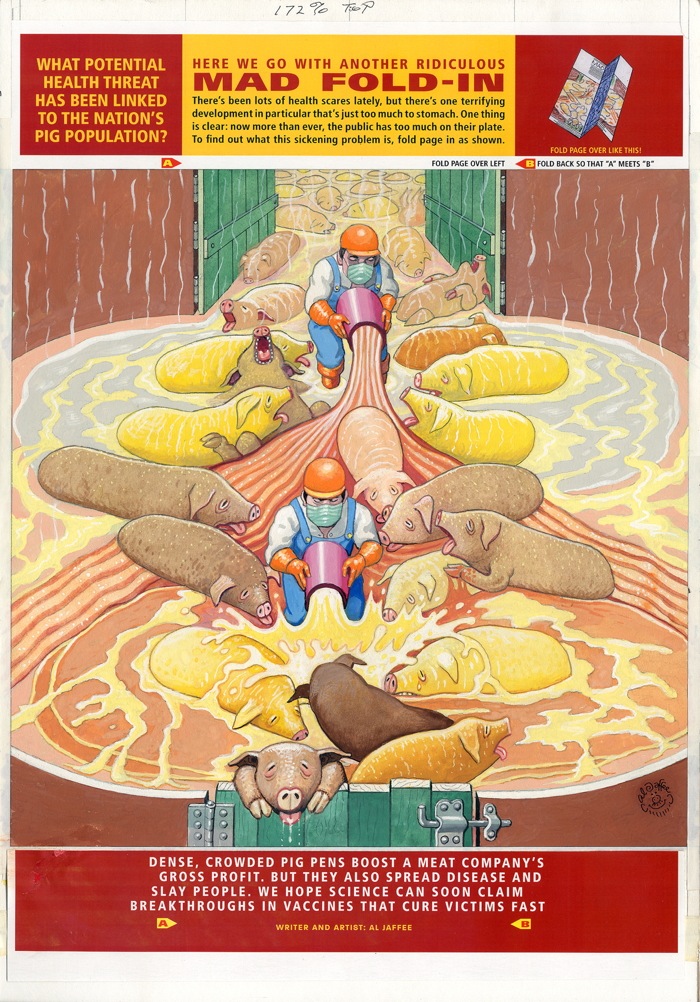
Al Jaffee ART SHOW opening reception FRIDAY NIGHT Nov 7th 6-9 PM
Scott Eder Gallery
18 Bridge St Apt 2I,
Brooklyn, New York 11201
Come celebrate the opening of our new show ‘The Mad Fold-In Art Of Al Jaffee’. Enjoy the majesty of these paintings in all their glory. Al will be in attendance.
Anya Davidson: CHARACTER FLAWS
6:00pm – 10:00pm
Tomato House
301 Saratoga Avenue,
Brooklyn, New York 11233
Tomato House is thrilled to present a solo show of drawings by the acclaimed cartoonist, printmaker, and musician Anya Davidson.
Davidson has produced an avalanche, a torrent, a dizzying froth of comic work over the course of the last decade, often self-published in labor-intensive, fully silkscreened editions. Her storylines frequently collapse elements of the fantastic, the grotesque, and the mythological onto scenes of everyday life, exposing the ancient forces at work under our veneer of modern civilization. Her story “Barbarian Bitch” appeared in Kramers Ergot 8 and the graphic novel “School Spirits” was published in 2013 by PictureBox. “Band For Life”, her Ignatz-nominated online comic about the trials and tribulations of a group of young musicians, continues to appear weekly on vice.com.
“Character flaws is an attempt to capture some of the inhabitants of my brain, my neighborhood, my planet and my galaxy. They are usually in motion but they stood still for these portraits. As a cartoonist I have a deep and abiding obsession with the human figure and the myriad ways it can be altered, twisted and re-interpreted. I also have a compulsion to make up stories. Sometimes my character designs generate stories and sometimes it’s vice versa. Each one of these creatures is the potential protagonist of a story I haven’t thought up yet.” -A.D.
CHARACTER FLAWS opens November 7, with a reception from 6 to 10 PM and continues through December 6.
NY Launch Party of Matt Huynh’s comic book ‘Magpie, Magpie’
at 6:00pm – 8:30pm
B_SPACE NYC,
219 Mulberry St
New York, NY 10012
Come join us for drinks and great music to celebrate the launch of Australian artist Matt Huynh’s gothic sumi-e comic book ‘Magpie, Magpie’ including exhibition of original art.
Today at 6:00pm – 1:00am littlefield 622 Degraw St,
Brooklyn’s own legendary Cannonball Press has again assembled an extraordinary menagerie of graphic artists under one roof who will be present displaying and selling their prints for $50 or less for one night only on Nov. 8th at LITTLEFIELD NYC.
ONE NIGHT ONLY. Friday, Nov. 7th, 6pm – 1am
LITTLEFIELD
622 Degraw St., Gowanus, Brooklyn, NY 11217
btwn. 3rd and 4th Aves.
www.littlefieldnyc.com
Take the 2, 3, 4, 5, B, D, N, or Q to Atlantic Terminal or the R train to Union St.
directions: www.littlefieldnyc.com/directions
21 and over only.
As part of New York Fine Art Print Week, organized by the International Fine Print Dealers Association in conjunction with the Annual IFPDA Pint Fair, long-time champion of the affordable art cause Cannonball Press has brought together these great artists so that New York can have a chance to see first-hand the incredible resurgence in affordable fine art printing that is happening across the country.
Featuring:
Justseeds
Bikini Press International
Sean Star Wars
Drive By Press
Cinders Gallery
Non Grata
Florence Gidez
Deerjerk and Haypeep
Raking Light Projects
Church of Type
The Amazing Hancock Brothers
Cannonball Press
Come join us for live printing, beer, music, and a GIANT dogpile of awesome cheap prints!!!
Graphic Canon of Children’s Literature Book Launch Party
6:30pm – 8:30pm
Society Of Illustrators 128 E 63rd St,
New York, New York 10065
Come out and celebrate the official book launch of The Graphic Canon of Children’s Literature by master anthologist Russ Kick. The launch party will be held in conjunction with the second annual “Push and Kick Awards” at the Society of Illustrators. Seven Stories Press would like to recognize the enthusiasm and support of three important figures in the comics art community, R. Sikoryak, Hillary Chute, and Lynda Barry. The reception is being co-sponsored by The Society of Illustrators and Publishers Weekly. The awards ceremony also coincides with the opening of an accompanying exhibition at the Society of Illustrators, of original artwork by contributors to The Graphic Canon of Children’s Literature.The exhibition will run November 4–December 20.
7:00pm – 10:00pm
Park Slope Ale House
356 6th Ave,
Brooklyn, New York 11215
Join Hic & Hoc Publications, Space Face, Secret Acres, Breakdown Press, Decadence Comics & Happiness Comix for our first annual pre-CAB Comic Book Party, Friday, November 7 from 7-10PM at the Park Slope Ale House.
Come out, have a beer and tell us universal truths that we’ll try to dispute. It’ll be a good opportunity to get ready for CAB, where we’ll all try to out-cool each other and fail miserably.
We’ll be in the back room but a group of sad-faced comic nerds shouldn’t be too hard to spot.
Poster art by Joe Kessler!
Blog: PW -The Beat (Login to Add to MyJacketFlap)
JacketFlap tags: Al Jaffee, Stan Lee, Torsten Adair, Top News, herb trimpe, Asbury Park Comicon, Peter Sanderson, stan lee hair, History, Conventions, Add a tag
by Peter Sanderson
While WonderCon, one of the nation’s largest comics/multimedia conventions was going on in Anaheim, last Saturday New York and New Jersey area comics fans were listening to comics greats speak in the more intimate setting of the Wonder Bar at the Asbury Park Comicon, now in its third year.
The convention took place in Asbury Park, New Jersey, along the celebrated Jersey Shore. Founded in the 1870s, the town still has picturesque Victorian architecture. But the town is now most famous for its prominence in popular music history from the 1970s on, most notably the early career of Bruce Springsteen and the E-Street Band.
Only a year ago founders Cliff Galbraith and Robert Bruce held the Asbury Park Comicon in Asbury Lanes, a combination music club and bowling alley. But this year the main venue for the con was the grand old Asbury Park Convention Hall, part of an enormous complex that includes the Paramount Theatre and was constructed in the 1920s on the boardwalk along the beach. Exhibitors filled two floors of the Convention Hall. The theatre and arcade are connected by an arcade, where a 1960s style Batmobile and a Back to the Future DeLorean were displayed; the arcade was also the site of the Comicon’s cosplay competition. If anyone wanted to take a break from con activities, they could gaze out the windows to see the light glittering on the Atlantic Ocean on a beautifully sunlit day.
Panels were held across the street at the Wonder Bar, decorated with images of Tillie, a grinning cartoon figure who is an icon of Asbury Park history. Starting roughly forty-five minutes after the Comicon opened at 10 AM, the remarkable line-up of panels ran until closing time, with the Beat’s own Torsten Adair as master of ceremonies. This was a pleasant venue, with a stage on one end, but food and drinks were being served at the other end of the tavern, and the noise from people talking down there rose in volume during the course of the day, becoming a problem by late afternoon.
First up was “Of Clerks and Comic Book Men.” Asbury Park is not far from Red Hook, New Jersey, the location of Kevin Smith’s comic book store Jay and Bob’s Secret Stash, the setting of AMC’s reality television series Comic Book Men. Present on this first panel of the day were Ming Chen, Bryan Johnson, and Mike Zapcic, all regulars on the show, and Brian O’Halloran, the lead actor in Smith’s films Clerks, Clerks II, and the forthcoming Clerks III. The panelists bantered entertainingly, sometimes aiming funny but affectionate insults at one another, while reminiscing about how they first met Kevin Smith. It came as something of a shock when it was pointed out that the original Clerks is now nearly twenty years old. Asked how he got the role of Dante in Smith’s film, O’Halloran started by claiming he “had some provocative pictures of his [Smith's] mom,” but then told the story seriously, how he auditioned to be an extra and unexpectedly ended up getting a lead role. As for Clerks III, which Smith is now writing, O’Halloran said that from what he knows about it, “I think it will be one of his best written pieces.” Johnson pronounced it “pretty amazing” and “really funny.”
Asked about Stan Lee’s appearance on Comic Book Men, Johnson noted “how nice” and “cool” Stan is. Then he recalled how when he was riding in a limousine with Lee during the making of the episode, he asked Stan “if he was that excited about always getting comic book questions.” After getting an unexpected response, Johnson said, “I swore to him I would not tell his answer.” Was it “shocking,” he was asked. “A little bit,” Johnson replied.
Then came the Comicon’s keynote address by Michael Uslan, an executive producer on all the Batman live action movies from director Tim Burton’s 1989 Batman onwards and author of the memoir The Boy Who Loved Batman. This keynote was a variation on Uslan’s familiar, well-crafted presentation, recounting his life starting with being a young boy engaged in the then lonely hobby of collecting comics, who saw the debut of the 1960s Batman TV show, was appalled that it was a comedy, and vowed (not unlike the young Bruce Wayne, as he says) to devote his life to showing the world that Batman could be done as a serious hero. And then Uslan recounts how he achieved his dream, teaching the first academic course on superhero comics, becoming a writer at DC Comics, and after ten years of struggle to make a serious live action Batman film, finally triumphing with the Burton blockbuster.
What made this version of his speech different were his many references to the Jersey Shore. As a boy Uslan lived in nearby Ocean Township, but regularly came to Asbury Park. “It is so cool to be back home,” Uslan declared. It was in “a place twelve miles from here,” a flea market called Collingwood Auction, that Uslan said he began amassing his colossal collection of Golden Age comics, paying only a nickel for each. He also recalled driving around “the Circuit” in Asbury Park in the late 1960s, trying to pick up girls; unfortunately, Uslan said he wore a Batman helmet to try to look cool, and “it didn’t work.” Uslan said that the last time he had been in the Wonder Bar, where he was giving his speech, was when he had his very first drink!
At noon comics historian and publisher Craig Yoe, introduced by Torsten Adair as “the Indiana Jones of comics archaeology,” interviewed cartoonist Bob Camp. “I have him up on a pedestal,” Yoe said about Camp. “And I’m afraid of heights,” replied Camp, setting the tone for this witty look back at his lengthy career in comics and animation.
As for just when he started cartooning, Camp said, “I don’t remember not drawing. It’s all I ever did,” joking, “It’s why I have no other skills.” He was fascinated by animated cartoons as a boy, especially Warner Brothers cartoons, but also “any cartoon I could watch,” singling out Famous Studios’ Herman and Katnip series and Terrytoons’ Gandy Goose and Sourpuss. Camp likened Gandy and Sourpuss to two famous characters he later worked on, Ren and Stimpy., “One mean guy, one happy-go-lucky guy, and they’re both gay.”
Camp talked about learning his craft by drawing caricatures in Provincetown on Cape Cod. He said he knew nothing about comic books when he started working at Marvel. “Blame Larry Hama,” he said, since Hama hired him, and Camp began cartooning for Marvel’s humor magazine Crazy. He also did art corrections in Marvel’s Bullpen, where, he said, he learned to imitate the styles of every 1980s Marvel artist, including John Byrne and Bill Sienkiewicz. Camp also confessed that editor in chief “Jim Shooter scared me,” and reminisced about the stories inker Vince Colletta would tell about crime.
Camp then segued into recounting his career in animation, talking about working with animator Bruce Timm on The Real Ghostbusters, working alongside “the greatest guys in animation” on Tiny Toon Adventures, and meeting animator John Kricfalusi, leading to their collaboration on Ren & Stimpy. But, quoting Charles Dickens, Camp referred to his time on that show as “the best of times, the worst of times,” describing what he saw as Kricfalusi’s self-destructive relationship with the Nickelodeon network and his own falling out with Kricfalusi.
Camp ended by talking about his current work, including a Kickstarter project that he and Larry Hama have launched for an animated cartoon called “Hard Heart an Strong Arm.”
Next, at 1 PM, came “Al Jaffee: 57 Years of Going Mad.” Jaffee, now 92 but as sharp as ever, provided his characteristic snappy answers to the far from stupid questions put to him by comics writer and editor Danny Fingeroth. “I have never hosted a panel in a bar before,” Fingeroth began, adding, “Is everyone drunk?”
Fingeroth and Jaffee explored Jaffee’s life going back to his childhood in Savannah, Georgia. “I think I started cartooning a day after I was born,” Jaffee said. His mother took him to live for years in what Jaffee called “the Siberia of Lithuania.” There comics proved to be “critical” to his survival, Jafgfee said, explaining that “It was like the 18th century where I lived in Lithuania,” but his father sent him a collection of Sunday and daily newspaper comic strips from America every six months. “My brother and I spent hours copying all the cartoons.”
Returning to America “in the depths of the Depression,” in 1936 Jaffee entered the High School of Music and Art, newly founded by New York’s legendary (and comics-loving) Mayor Fiorello LaGuardia. “I think he saved all our lives,” Jaffee said, whose best friend there was future Mad co-worker Will Elder.
Unable to get work from advertising agencies, Jaffee and other artists turned to comic books instead, and Jaffee started by selling his idea Inferiorman, which he called “a shameless takeoff on Superman,” to Will Eisner, who put him to work in his studio.
Then Jaffee started a long relationship working for Stan Lee at Timely Comics, the company we now know as Marvel. “Stan was 19. I was 20. I immediately saw what a firebrand Stan was. He had just taken over from Simon & Kirby” as editor of Timely Comics. For Timely Jaffee wrote and drew Ziggy Pig and Silly Seal, and later took over Patsy Walker. Under Fingeroth’s questioning, Jaffee also recounted how he took over another Timely funny animal series, Super Rabbit, and gave the character believable problems, even “fits of depression,” and Fingeroth pointed out this prefigured Spider-Man. Jaffee said his “relationship with Stan Lee was not close, but it was warm,” and Lee never edited him, giving him a free hand.
Referring to the Senate hearings condemning comic books as causes of juvenile delinquency, Jaffee declared “In my opinion the U. S. Senate was causing juvenile delinquency,” to applause from the audience.
Jaffee began discussed his work with Harvey Kurtzman, whom he called a “strange genius,” on the short-lived magazines Trump and Humbug, and then his going to work for editor Al Feldstein on Mad. Fingeroth and Jaffee went through the familiar and surefire stories of how Jaffee created his best-known Mad features, “Snappy Answers to Stupid Questions” and the Mad Fold-Ins. Jaffee had thought his first Fold-In “was a one-shot gag,” and believes that if Kurtzman had still been editing Mad, there never would have been a second one, since Kurtzman was always looking for new ideas. But Feldstein directed Jaffee to come up with a second one. “And that was 49 years ago,” concluded Jaffee, who has been doing Fold-Ins all during those years, and teased the audience by telling them the set-up for the one he is woking on now—but not the punch line.
At 2 PM one of the Comicon’s organizers, Cliff Galbraith, interviewed underground cartoonist John Holmstrom, who in 1975 co-founded the magazine Punk, which chronicled the punk rock movement in its heyday.
Then at 3 PM it was back to the Golden Age of Comics, with Fingeroth back onstage, this time interviewing another of the few survivors of that period, artist Allen Bellman. In 1942, when he was a teenager, Bellman started working for Timely Comics, as Marvel was known in the 1940s, drawing backgrounds for artist Syd Shores’ work on Captain America. Bellman was hired by artist Don Rico and did not meet Stan Lee until two weeks later. His initial image of Stan was as a young man following around his uncle Robert Solomon, the brother-in-law of Timely publisher Martin Goodman. Bellman recalled that the Timely Bullpen was divided into two separate rooms, one for “the animators,” his name for the funny animal artists, and the other for “the illustrators,” the superhero artists such as himself. The first series that Bellman drew on his own was The Patriot, but he also worked on Marvel’s trinity of stars, The Human Torch, Sub-Mariner, and Captain America.
Perhaps surprisingly, Bellman never met Jack Kirby and never met Joe Simon until 2007. At the Comicon earlier that day Bellman was reunited with Al Jaffee. “I was so happy to see him.”
Bellman was one of the hundreds of comic book professionals who were forced to leave the business thanks to the outcry against comics in the 1950s. Referring to Dr. Fredric Wertham’s Seduction of the Innocent, Bellman said, “That book put me out of commission.”
Bellman is well aware that he is one of the few survivors left from the Golden Age of Comics. After reminiscing about the late Gene Colan, Bellman commented, “There’s not many of us left.” And at the end of the panel, asked about his former colleagues, Bellman said simply, “They’re all gone but me.”
Following at 4 PM was “Marvel Days,” a panel surveying the history of Marvel Comics from the 1960s onward. Moderated by Christopher Irving, the author of Leaping Tall Buildings, a book of interviews with comics creators, the panel also included Sean Howe, author of the recent history Marvel Comics: The Untold Story. However, the discussion was dominated by Herb Trimpe, longtime Marvel artist who started collaborating with Stan Lee on The Incredible Hulk back in the Silver Age of the 1960s, and Papercutz editor Jim Salicrup, who rose from messenger to editor at Marvel, where he became best known for editing the Spider-Man titles.
Oddly, both Trimpe and Salicrup had anecdotes about Stan Lee’s hair. Trimpe said that when he first worked at Marvel, Stan, who was in the process of undergoing a hair transplant, “hated” Trimpe’s thick hair. In recalling his early days at Marvel as a messenger, Salicrup recalled going on a mysterious mission to an East Side town house to pick up an equally mysterious package, which turned out to be Stan’s toupee!
Salicrup got his foot in the door at Marvel by sending in a postcard and getting hired by Roy Thomas, just as Marvel was starting a massive expansion in the early 1970s; as Salicrup observed, it is hard to believe that anyone could get hired this way by today’s corporate Marvel. “I loved it when Stan was there, for the first ten years I was there,” before Lee moved out to California to promote Marvel properties as potential TV shows and movies.
Trimpe explained that the “problem he had at Marvel” was that he considered himself a artist more in the cartoon-like style of Jack Davis, who instead had to try for a “classic look” like that of Marvel mainstay John Buscema. Trimpe turned to the work of Jack Kirby. “As far as I know, Stan never ordered anyone to copy Kirby’s stuff,” Trimpe said. “Kirby’s stuff had a language to it” that was “very powerful stuff. He is the central comic book artist.”
Asked about office politics at Marvel, Salicrup said that he was aware of it at the time, but preferred to avoid it. “Marvel was big enough that I could easily get lost in it,” he said. “I was just enamored about being a kid from the Bronx who was in this Oz-like place like Marvel Comics in the 1970s.”
Questioned by Irving, Salicrup gave his take on the now familiar tale of how Chris Claremont and John Byrne’s “The Dark Phoenix Saga” evolved, and how editor in chief Jim Shooter ordered that the ending be changed so Jean Grey would die, thereby, in Salicrup’s view, transforming the saga into a classic.
Salicrup also spoke of Shooter’s emphasis on “clarity of storytelling” and noted that nowadays “some DC and Marvel books can be very hard to read” for newcomers to the medium, such as the kids who read Salicrup’s Papercutz comics. Hence, Salicrup said, “Sometimes I feel like I’m deprogramming” artists from Marvel and DC, by “having to explain the real basics of storytelling” in comics, like leaving enough room for the word balloons!
Finally, from shortly after 5 PM till the convention’s closing time, Jon B. Cooke, editor of the magazine Comic Book Artist, interviewed Jay Lynch, a leading member of the original generation of underground comix creators. In 1968 in Chicago Lynch launched and edited Bijou Funnies, one of the pioneering underground comix. He was also one of the principal artists for Topps’ Garbage Pail Kids and Wacky Packages.
Lynch recounted how he first saw Harvey Kurtzman’s original version of Mad in 1953. “When I saw Mad, I decided to be a cartoonist.” But Lynch said he initially did one-panel gag cartoons. “I didn’t start doing comix until Zap came out,” Robert Crumb’s landmark underground comic. Lynch likened underground comix to other cultural phenomena of the 1960s, including the Free Speech movement and the taboo-breaking comedy of Lenny Bruce. Lynch recalled how he, Crumb, and another underground comix pioneer, Gilbert Shelton, would trade their comic books, with each other. Thus enabling them to keep in touch with each other’s work. Lynch also explained that President Richard Nixon launched a pornography investigation that made publishers nervous about possible prosecution, thereby sending sales of underground comix into decline.
Turning to Lynch’s work for Topps, Cooke asked, “Is that what you’re best known for—Garbage Pail Kids?”
“No,” replied Lynch, “I think my performance of Swan Lake.”
Nowadays, Lynch said, he is doing paintings which he sells on eBay.
Lynch wound up the panel by recounting an anecdote which captured some of a sense of the good and bad sides of the 1960s. It was the day that the Beatles’ White Album came out, Lynch was working for Topps, and “everyone on the subway has a copy of the White Album.” Lynch went to see fellow underground cartoonist Spain Rodriguez, who was living in a building in an area ridden with crime and drug addicts. Lynch went out and bought pizza for both of them, but on his way back was accosted by thugs, who asked him what he was carrying. Lynch lied and said it was the Beatles’ White Album, whereupon one of the thugs, impressed, said, “Okay, we’ll let you go.”
Photo © Danny CenturyMany more photos of the con in the link.
Blog: PW -The Beat (Login to Add to MyJacketFlap)
JacketFlap tags: Stephanie Buscema, seth kushner, Bernie Wrightson, Bob Camp, Asbury Park Comicon, Steve Mannion, News, Interviews, Robert Crumb, Arthur C. Clarke, Al Jaffee, Top News, Josh Bayer, Jack Davis, Jamal Igle, Jay Lynch, Michael Uslan, Mark Mazz, Mark Morales, Unbearable, Mad Magazine, Will Eisner, Asbury Lanes, Rick Griffin, Richard Corben, Rat Bastard, Rob Bruce, Sarah Dyer, Indie Comics, Joe Kubert, John Holmstrom, Isaac Asimov, Evan Dorkin, Events, Comics, Conventions, herb trimpe, George Barris, Heavy Metal Magazine, Box Brown, cliff galbraith, Danny Fingeroth, Chris Irving, Dave Ryan, Don McGregor, Ed Roth, Moebius, National Lampoon, Pierre Boulle, R.O. Bleckman, Mike Dawson, Asbury Convention Hall, Mike Zapcic, Ming Chen, Dean Haspiel, Add a tag
If you’ve been following the history of the Asbury Park Comicon, which opened only a year ago in March of 2012, you know it’s been a strange, yet rather astonishing ride, but imagine how much stranger it must be for founder and indie comics creator Cliff Galbraith. What started in a bowling alley turned music venue and local hangout, Asbury Lanes, has become a major testament to demand for Comic Cons in New Jersey, and also a statement about the desires and tastes of con-goers who have relished the indie vibe of Galbraith’s brainchild. After a highly successful second Con in September of 2012, Galbraith announced that the Con would move to the much larger and even more historic venue of Asbury Park Convention Hall for its third event on March 30th 2013.
Then Superstorm Sandy struck, devastating the seaside town of Asbury Park, leaving the future of the Con in question. Against some difficult odds, the Con forged ahead, and Galbraith faced another kind of storm- media frenzy- over the upcoming Con. It’s fair to say that his phone has been ringing off the hook as local press as well as The New York Times have been trying to get the scoop on what looks to be a growing New Jersey institution as Asbury Park Comicon nears its biggest event yet. Dozens of prominent guests will be flanking this full-blown gala of a Con, and the Con will also be featuring panels and contests. Galbraith hasn’t had a moment’s rest since all this started more than a year ago, and he finished up several other interviews just in time to answer some questions about all this Con madness, and how it fits into his own life, for The Beat.
Hannah Means-Shannon: Can you remember the moment when the idea for starting a Comic Con in New Jersey first occurred to you? How wild did the idea seem at the time?
Cliff Galbraith: Maybe I’ve always wanted to run my own con. I’ve been to enough of them over the last few decades. A lot of them were pretty shabby. Customer service was pretty awful. I’ve been to cons where the promoter never came around and so much as said hello or how’s it going. Some were downright rude or deceitful.
On a Sunday in the summer of 2011, I stopped into the bowling alley/rock club Asbury Lanes — they were having a little record fair in there. I knew a few of my friends would be there selling and buying records or drinking beers so I figured I’d get away from my drawing table for the afternoon and see what was happening. My friend and neighbor Robert Bruce was selling an assortment of rare rock and jazz records and some underground comix. I remember looking at someone rooting through a white box of records, and I turned to Rob and I said “Where else have I seen somebody doing that? Reminds me of people at a comic convention digging through long boxes.” We laughed, but I walked around a bit and I kept thinking about it. If they could sell records in this place, why not comics? My friend Jenn Hampton was the manager, so I asked her if we could have a comic con at the Lanes. Nine months later we had the first Asbury Park Comicon.
HM-S: What’s the strangest task you’ve ever had to do in order to get a Con running or keeping it on track?
CG: Partner with Rob Bruce! We’re friends, but business-wise we’re been very independent, lone wolves. But it’s been a great experience and there’s absolutely no way I could’ve done all of this or come up with all the solutions on my own. It’s been Cliff and Rob’s Excellent Adventure.
[Rob Bruce and Cliff Galbraith]
HM-S: Why Asbury as a location for the Con?
CG: People launch cons in New Jersey all the time. Some have been going on for years, but they don’t grow. I think the secret ingredient in throwing a Con is location — pick a fun destination. That’s really what set San Diego up for success early on. Who didn’t want to go somewhere with beautiful weather with plenty of bars, restaurants, hotels, a beach? That’s enticing.
So there needs to be something other than the Con once you walk outside. That’s my standard. I don’t want to go to some Con near an airport or far away from everything. I don’t want to go to some little hotel hermetically sealed in away from the world. Lots of Cons are downright depressing. They have no personality. Just putting a bunch of artists and dealers in a room and charging admission doesn’t make it fun.
[The Asbury Park Boardwalk at dusk]
HM-S: What were reactions like to the first Con at Asbury Lanes?
CG: Everyone had a great time. Most people sold lots of books. I was stunned. I just wanted to put on a little event and not screw up, just have a fun day. But the venue was a real hit. The exhibitors who’d never been to Asbury Park, who’d never been to Asbury Lanes fell in love with it. I’m spoiled, the Lanes are part of my world, but it’s really a cool old place. And there’s a bar. We played old punk tunes and Serge Gainsbourg, Nelson Riddle, soul, and stoner rock. It was more like a party — with comics.
HM-S: What obstacles did you face launching that first Con at the Lanes?
CG: It’s always tough at first to get someone with a name to attract fans. I think the first guy I called was Evan Dorkin. I always dug his work, and I’d known him for years — but more importantly he was someone who would get what I was trying to do. Evan and Sarah Dyer jumped right in. Then they told Steph Buscema. Jamal Igle was another old friend, so I contacted him early on. Those guys trusted me — that was important. But getting talent can be tough early on. Then there’s talent that doesn’t show up, there are flakes in this business and it just goes with the territory.
The biggest shock was that two months before our first Con, Asbury Lanes was sold. I know it sounds crazy, but I never got a written contract. I made a deal with my friend who was the manager. At one point, she didn’t know if she was going to still have a job or whether the new owners would honor our deal or want more money. It was scary, because this was our first time and if we screwed this up nobody would ever trust us again. It all worked out and it was a great day.
[APCC at the Asbury Lanes]
HM-S: What’s your personal philosophy behind Comic Cons?
CG: Don’t be boring. Don’t be predictable. Don’t call yourself a Comic Con and fill the bill with wrestlers, actors, and other people who have nothing to do with comics. Respect and honors those who make comics, especially those who came before us. I see a lot of bullshit at cons and I just don’t get it. If somebody wants an autograph of somebody from Twilight or some guy who played a storm trooper 30 years ago — that’s their business, but it really has nothing to do with comics. It detracts and devalues comics as something that is supposed to be celebrated. My feeling is if you’re not here for the comics then shove off. Go to a horror con, go to a sci-fi con.
HM-S: Why do you think we need Comic Cons, as a society?
CG: When my parents were kids the big thing was the circus coming to town. That’s disappeared, and now we have the Comic Con coming to town. Look at every city — there’s a con everywhere. People love it — its like Woodstock, Lollapalooza, county fair, chili cook-offs, boat shows, car shows, record fairs, film festivals, people want to get together with those who share their passion. They want to spend a day with their kids, meet new friends, make a discovery. It’s an amazing social phenomenon, and it’s in its infancy.
HM-S: What did you grow up reading? Any favorite comics or characters?
CG: My mom grew up in a candy store in Newark, N.J., and she spent her time drawing pictures of movie stars from magazines that were on the newsstand. She also loved comics. She introduced me to Superman when I was about four years old. She also taught me to draw. She got me a subscription to SUPERBOY and I looked forward to those comics every month. Then one day when I was getting a haircut, I picked up a copy of FANTASTIC FOUR that was in the barber shop — this was around 1965. The Kirby art kind of creeped me out at first, but I was fascinated. Joe Kubert’s HAWKMAN was a favorite. Of course BATMAN. CREEPY, EERIE, FAMOUS MONSTERS and hot rod magazines with stuff by Ed Roth and George Barris. I also read a lot of science fiction — it was a pretty classic age with Asimov, Arthur C. Clarke, and I read Pierre Boulle’s Planet of the Apes after seeing the movie. I graduated from super heroes to MAD. Then National Lampoon. At some point I found some underground comix in a head shop in Menlo Park, N.J. — they blew my teenage mind. Then Heavy Metal Magazine and Punk Magazine completed the process of completely warping my mind.
HM-S: What are your biggest influences as a comics creator?
CG: More of MAD than I used to acknowledge. I think it was an early influence in the way I saw a lot of stupid things in society. It was much tougher on politicians and corporations back in the 60′s and 70′s. I would try to draw like Mort Drucker when I was a kid. Kirby is an influence when I’m feeling lazy, when I think I’ve done enough — I think about the amount of work he put out in a day and I’m embarrassed. He keeps me going back to do a bit more before turning out the lights. I love Moebius. Bernie Wrightson, Richard Corben, Crumb, Rick Griffin, Jack Davis. I go back to Will Eisner when I get stuck on a drawing that’s not working — I’m still learning from looking at his drawings, I get answers from his panels. But when I created Partyasaurus, Beachasaurus, and all the Saurus characters back in the 80′s, I did some sort of R.O. Bleckman thing with the wiggly, broken lines. It was very successful, but I never revisited that style again.
HM-S: It’s been a winding road for you career-wise. How does Con creating fit into your life, looking back?
CG: I came back to comics after ten years — at one point I was in really bad shape with Lyme disease, but that’s a whole other story. I started making RAT BASTARD comics again, just selling them at cons. I didn’t even go through Diamond — I just wanted to put something out and do some cons. Then I started working with my wife on UNBEARABLE, a totally different style but a lot of fun to draw. I was finally getting back into it, making comics. I had a few issues written I was drawing consistently and then this damn Asbury Park Comicon came along. The first one wasn’t too bad, but now with a much bigger venue, more guests, more exhibitors, ads, making a TV commercial, doing interviews with newspapers, and building a website, designing posters, it became a full time job. I didn’t realize it at first, but I sacrificed my art to build the Con. Which is okay, since April 1st I’m back at the drawing board and making comics again.
HM-S: Asbury Park was pretty hard hit by Superstorm Sandy. What was your own experience of the storm like?
CG: The other day I found pictures of my wife Judie and I at Convention Hall on the balcony making silly faces trying to stand up against the wind the day before the storm. I felt embarrassed that we were joking about it and twenty-four hours later there would be so much devastation. We could’ve have known, but I couldn’t look at those pictures. The fact that Convention Hall is still standing is amazing, but it did sustain a lot of damage.
My own experience with the storm was terror. There’s three giant pine trees in my yard that I was certain would crush us in the night. I felt like the roof on our house would be torn off any minute the whole time. We had no power for two weeks. We tried to stay in our home and tough it out with no power. I could draw during daylight. We had little parties with the neighbors and pooled our resources. After 7 or 8 days, it got too tough. It was cold. There wasn’t much to do once the sun went down. We had to go stay with my parents. But after a few days, I felt like I should be putting Led Zeppelin posters up in the basement — in other words, I felt like I was a teenager again. My parents were great about it, but you really can’t go back and live with your parents.
We were fortunate — we got to go back to our house and it was like nothing had happened other than we had to restock our refrigerator. But only two miles east of us looked like an A-bomb had been dropped. A lot of our friends suffered from that storm. We’ll be doing several things at Asbury Park Comicon to raise money for some of the nonprofits in our area and keep the focus on Sandy victims.
[The Asbury Convention Hall, site of APCC 2013]
HM-S: Were you afraid that damage from Superstorm Sandy might put the kaibosh on Asbury Park Comicon this year?
CG: It actually did. The building was going to be closed down by the city or something. We were told we needed to start thinking about an alternate site. It got pretty bleak. We looked into moving the con to Monmouth Racetrack, or one of the schools in Red Bank. We were desperate. And then I got a call late one night and they told me we were back in Convention Hall.
HM-S: What’s going on with Asbury Convention Hall? I hear it may not host events in the future after May.
CG: It’s an old building. It’s taken a beating. It had issues before the storm. So now it’s just better to shut down completely and get everything done once and for all. May 1st, it will be shuttered. We may be one of the last events there. This is a big thing for us to throw a con there — we grew up walking through the Grand Arcade from the boardwalk. I saw The Clash there, boxing, roller derby. To see our event on that marquee is like a dream come true — and it almost didn’t happen.
[Asbury Park Press covers COMIC BOOK MEN and Galbraith's upcoming Con]
HM-S: What’s up for Asbury Con in the future? Is it going to become an even bigger Jersey Con?
CG: We’ll know in a few weeks what the renovation schedule is for Convention Hall. We’d like to announce the dates for 2014 at this the con next week, but I don’t know if that’s quite possible by March 30th. But we’d like to move to late April and do a two day Con. The Berkley Hotel has a series of ballrooms — it’s like The Shining in there. I spoke to them last week. I’d like to keep this show in Asbury Park. Again, it’s the location that really makes a Con special. We’re planning on including more venues, galleries, etc. in the Con. Maybe a cosplay parade on the boardwalk. Put some of the bigger panels in the Paramount Theater.
We also have another big Con in the works for June 2014, but we haven’t finalized the date or exact venue. We’ve floated the ideas with a few comic industry people and we’ve gotten good feedback. The location will surprise a lot of people at first, but it makes sense geographically.
[Poster art for APCC#2 in 2012]
HM-S: What changes had to be made in the planning process of the con to move it from Asbury Lanes to the Convention Hall this time?
CG: Besides the amount of time Rob and I had to put into it, I’d say the next thing would be the amount of money it takes to launch an event this size. People have no idea what goes into a show like this. Now we’re into things like insurance, security, lighting, sound systems, putting guests in hotels, meals, travel, advertising — the expenses pile up quickly. This is no longer a fun little get-together at the Asbury Lanes with some comics and a few beers, this is a serious business venture.
[Memorable image from APCC #2 in 2012 with Evan Dorkin, Cliff Galbraith, Dean Haspiel, and Larry Hama]
The most important thing I’ve learned about running a show this size is we can’t do it on our own. We had a lot of help. Guys like Danny Fingeroth, Dean Haspiel, Seth Kushner, Chris Irving, Mark Mazz, Dave Ryan, all got us guests that we never would’ve gotten on our own. Eric Grissom built us a great website. Stu Wexler made a TV commercial — and nobody asked for anything in return. Mike [Zapcic] and Ming [Chen] from Comic Book Men have been promoting us for months on their podcast. The people who run Convention Hall have been amazing. They all just want us to succeed — we’ve got some great friends in our corner. We’ve also got some great guests: Al Jaffee, Herb Trimpe, John Holmstrom, Bob Camp, Don McGregor, Jamal Igle, Jay Lynch, Evan Dorkin, Sarah Dyer, Mark Morales, Stephanie Buscema, and Batman producer Michael Uslan. Then there’s a whole indie crew like Box Brown, Josh Bayer, Mike Dawson, Steve Mannion, and lots of others.
I’m really fortunate to be able to do this. To have gotten my health back, to be making comics again and to put on events with so many remarkable people. Sure it’s a lot of work, but I’m having the time of my life!
HM-S: Cliff, I don’t know how you found the time to give us such a detailed insight into your own personal journey envisoning the Asbury Park Comicon with only a few days to go until the biggest APCC yet. But we appreciate your willingness to talk about it so openly and thanks for bringing a Con of this caliber to New Jersey.
Hannah Means-Shannon writes and blogs about comics for TRIP CITY and Sequart.org and is currently working on books about Neil Gaiman and Alan Moore for Sequart. She is @hannahmenzies on Twitter and hannahmenziesblog on WordPress.
Blog: PW -The Beat (Login to Add to MyJacketFlap)
JacketFlap tags: Events, Comics, DC, Superman, Al Jaffee, Jerry Robinson, Columbia University, Karen Green, Paul Levitz, Top News, Elfquest, Larry Tye, Denny O'Neill, Jay Emmet, Add a tag
On January 23rd, Columbia University Library acquired a double-bill of Golden Age related comics materials, including the research materials Larry Tye compiled to write his Superman biography, The High Flying History of America’s Most Enduring Hero, and six 1940’s BATMAN scripts from the estate of Jerry Robinson. These add to the ongoing Rare Book and Manuscript Collection at Columbia under the steerage of Graphic Novels Librarian Karen Green, already including Chris Claremont’s 2011 X-Men archive donation, and the large ELFQUEST bequest announced in early March. Columbia University, and a standing room only audience on March 7th, decided it was time to celebrate the donation, with a panel and reception entitled “Comics at Columbia: The Golden Age”, fortuitously coinciding with Will Eisner Week throughout the country.
The panel was moderated by Paul Levitz, educator, writer, and former president of DC Comics, and included Jay Emmet, former Warner Communications executive responsible for some of the first licensing of DC characters into toys and games, Denny O’Neil, former BATMAN editor and comic book writer, Al Jaffee, whose ongoing career as an artist on MAD Magazine can only be described as legendary, and Larry Tye, journalist and biographer, most recently of Superman.
Levitz introduced panelists who he hoped would help express the Golden Age of comics as “lived and seen” and trace the impact of the Golden Age into later comics history and his synopses of their careers pointed out that Emmet’s licensing of toys and action figures changed American childhood experience, O’Neil’s career sparked an era of “social consciousness” in comics, Jafee’s work introduced the tradition of “wiseass” humor into American comics, and that Tye has brought a level of “serious” journalism and biography to comics history by carefully engaging with all those whose lives have impinged on Superman’s development.
Levit’z general question to his panelists, “Why comics?” sparked a great deal of discussion as each member delved into their own pasts and tried to convey how they became drawn into comics as a career and what part comics have played in their lives. Jaffee supplied the historical context for comics just before World War II. At the “height of the depression”, he said, with “non-existent job prospects and anti-Semitism engulfing Europe”, he and many of his contemporaries found that the “old, established advertizing agencies” in New York would simply reject applications from those with Jewish names. Comics, on the other hand, Jaffee explained, were dominated by Jewish editors, artists, and writers, and beginning to flourish at that time. Since “comic book people were receptive”, Jaffee said, he and his contemporaries “jumped into it”, particularly since it was a paying gig.
Emmet was born into the comics industry, as the nephew of a Warner board member, and he spoke quite frankly about the “greed” and money-driven aspects of the industry that he perceived growing up. He reflected on his own role in getting lifetime sum of money for Siegel and Schuster, but from a merchandiser’s perspective, Emmet still felt that the lack of pay for the creators of Superman was negligible. Emmet’s most personal story, however, included a “sad story”, as Jaffee described it, of having an entire “silo” of comic books and pop culture memorabilia destroyed by his spring-cleaning wife who didn’t realize their emotional value to him. Needless to say, as the nephew of a Warner executive, Emmet had “every issue” of Golden Age comics in the destroyed collection.
O’Neil spoke about his work post Golden Age, handling many of the same characters. Levitz asked O’Neil why he felt characters like Superman and Batman have lasted so long, and are still relevant today. O’Neil’s eloquent response conveyed a great deal about his philosophy of comics creation. You have to “keep the essence of characters intact but let them evolve”, he explained, a lesson he learned from Julie Schwartz. It’s essential, O’Neil feels, to “let the character reflect what’s outside the window” to remain relevant, and it’s “those allowed to evolve who are still with us”, he concluded.
Levitz humorously pointed out that of the panelists, most “wandered into comics before frontal lobes were fully developed for judgment”, leaving them little choice but to pursue the medium, however, Tye’s position as a biographer returning to comics as subject matter was unique. Tye explained that the question of why Americans embrace the heroes that they do led him to write his biography of the Man of Steel. He, too, however, had a childhood connection to Superman, and loved working on the book for two years, feeling “10 years old” again.
Levitz asked individual panelists some specific questions about their areas of expertise, and started off by asking Emmet to explain just how DC licensing came about. Emmet explained that licensing was a new idea when he was a young publicist, and that he wanted to do “what hadn’t been done before”. Remarkably, his uncle tried to dissuade him from giving up a cushy job to pursue licensing, but Emmet proved predictions wrong by making astonishing sales in his first year of work by simply visiting and personally pitching DC character licensing to every toy company in New York. When Jaffee was asked to talk about daily life working for MAD as a young man, as many cartoonists today will find relatable, he said he simply spent all his time cartooning. Jaffee discussed one unique aspect of working for MAD that stood in contrast to working on superhero comics, that he could “use many characters” and had “freedom” since MAD was a “voracious consumer of material”, but that the pressure could be intense to come up with new ideas since “I was only as good as the next idea I had”.
O’Neill was asked to discuss how he managed to write over a 1000 BATMAN stories and still keep material fresh for readers. He admitted that he personally has a “low attention span” and is “bored easily” so tried to bring that reality to his work. He “set the rules” for himself early on with a 5 page document that spread to 35 pages of notes by the end of his career reminding him of guidelines to keep Batman’s universe on track. But after that, as an editor, the key was to hire “good creative people” and give them a “sense that what they are doing is not trash”, and then know, as an editor, when to “step back”. Imbuing creators with a sense that their work has some particular value to readers and fans formed one of the themes for the evening’s discussion. O’Neil memorably commented that while writing comics for him was a “job” and he was cognizant of the need to provide for his family, the “first death” of Robin, decided upon by reader-response phone-calls to “vote” on whether Robin would “survive”, was a wake up call for him about the significance of his work. Ordering food in a deli one day soon after Robin’s “death”, the owner heard he edited BATMAN and declared to the other customers that this was the guy who had “killed Robin”. Previous to that moment, O’Neil said, he had felt he was working in a “backwater” of publishing, but afterwards felt that he was, in fact, a “custodian of post industrial folklore” with deep meaning for readers. It was a sobering moment for him that conveyed a sense of “uncomfortable responsibility” and “enormous privilege”.
Tye, certainly, agreed with the value of comics as an art form and the essential role of preserving and archiving documents, explaining that two kinds of records are particularly important in preserving comics history, the written documents, such as those produced in the Siegel and Schuster law cases that shed light on the Golden Age of comics, and secondly, the documentation of oral histories from those involved in the early days of comics who are still living. All the panelists agreed that they hope soon Columbia Library will also be able to archive audio recordings of oral histories, and many of the scholars and professionals attending the event in the audience confirmed that they have recordings that might be useful for such an archive. In the age of digital files and increasingly easy transfer between older formats and digital files, why not? Karen Green agreed that it was a possibility for Columbia to attempt to preserve these files in the future as part of their comics-related collection.
Levitz’ final assessments about the contribution of his panelists to pop culture included Emmet’s role in “creating American childhood” through licensing, Jaffee’s pioneering persona in encouraging us to “question everything” through his work on MAD, and the social realities that O’Neil introduced and maintained in comics, as well as Tye’s invaluable contribution to uncovering the history of Superman as a cultural phenomenon. It was certainly an evening spent celebrating comics, and in particular, a time to look back on the seminal periods in the development of comics that were directed in their development by true pioneers. What better way to dignify the impact of comics than to preserve their original documents for future study and appreciation? Collecting and archiving comics materials at Columbia has quickly moved from a new program to a steady stream of worthy additions, and the panel celebration suggested increasing momentum in preserving comics history at Columbia.
Hannah Means-Shannon writes and blogs about comics for TRIP CITY and Sequart.org and is currently working on books about Neil Gaiman and Alan Moore for Sequart. She is @hannahmenzies on Twitter and hannahmenziesblog on WordPress.
Blog: DRAWN! (Login to Add to MyJacketFlap)
JacketFlap tags: WWII, Al Jaffee, MAD Magazine, hidden messages, political cartoons, Add a tag

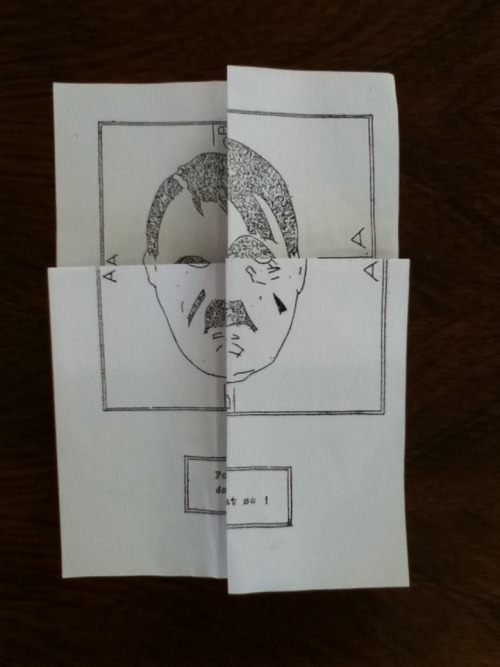
My uncle brought this from the Danish Resistance Museum here in Copenhagen - a subversive “fold-for-hidden-message” Hitler. Pretty cool. Reminds me of the back of Mad magazine.
This gem was posted by my friend Pippin. I don’t think Al Jaffee ever attempted a four-way MAD Fold-In, did he?
Blog: Children's Illustration (Login to Add to MyJacketFlap)
JacketFlap tags: MAD, al Jaffee, Add a tag
Blog: PaperTigers (Login to Add to MyJacketFlap)
JacketFlap tags: Authors, Picture Books, Julie Paschkis, Illustrators, Glass Slipper Gold Sandal, multicultural Cinderella, Paul Fleishman, Shen-s Books, Children's Books, Add a tag
Glass Slipper, Gold Sandal, the new picture book by Newbery Award winner Paul Fleishman, takes the story of Cinderella for a spin around the world. Fleishman starts out traditionally, “Once upon a time there lived a wealthy merchant whose wife had died. They had one daughter, gentle-eyed and good-hearted.” But once the stepmother messes things up and Cinderella cries, the story takes several directions. “…the animal poured honey for her from its horn…and a fairy gave her figs and apricots…and Godfather Snake gave her rice.”
By the time the prince/king/headman marries Cinderella, the page is overflowing with dancers and food from Zimbabwe to Korea, and readers of all ages will be under the spell of Fleishman’s lovely worldwide enchantment. Illustrator Julie Paschkis traces the story variations with colorful bands of textile-inspired images, labeled with country of origin. Click here and scroll down for an interview with Glass Slipper, Gold Sandal’s illustrator extraordinaire.
Fleishman may be the first to meld so many Cinderella tales into one narrative. In doing so, he communicates something very special about this beloved story. But Cinderella’s multiculturalism is well documented; here’s an ALA BookLinks list of worldwide Cinderellas by region and culture. Here’s an extensive list from the Cinderella specialists, our friends at Shen’s Books. You can also search for Cinderella, if not her glass slipper, here at PaperTigers.




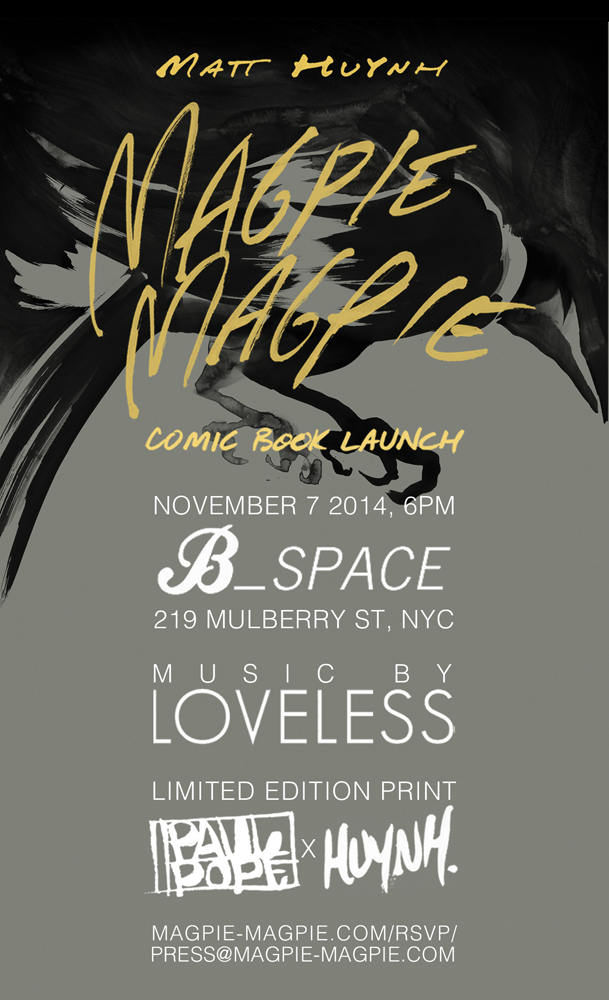
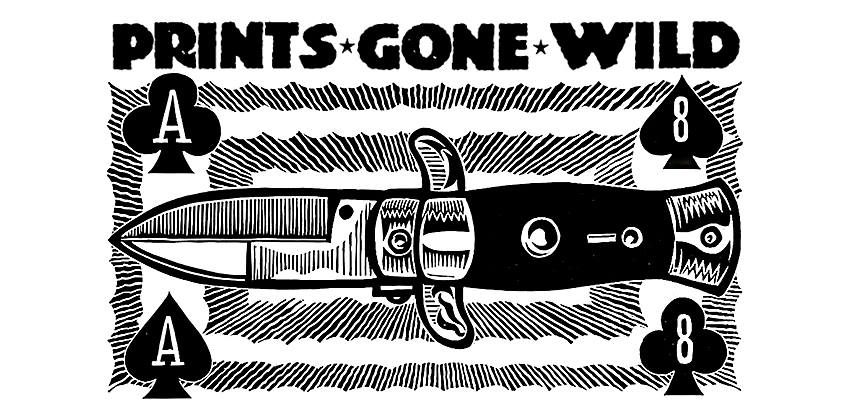

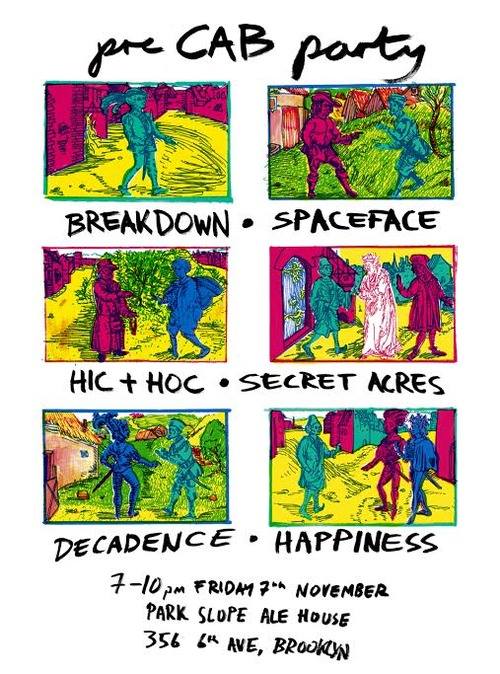

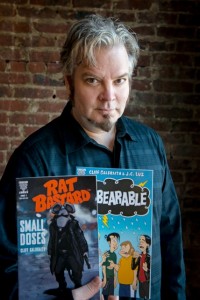

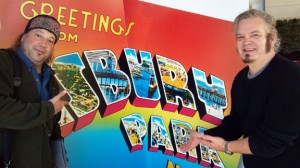


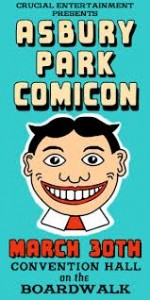
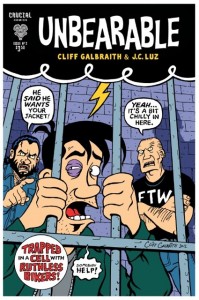
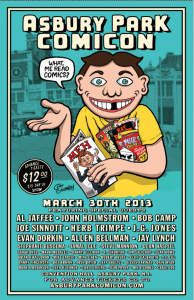
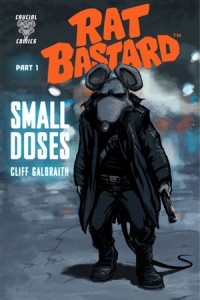
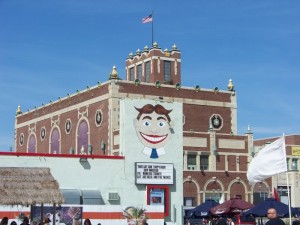



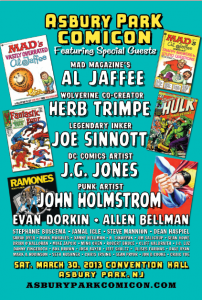
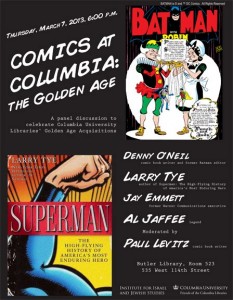
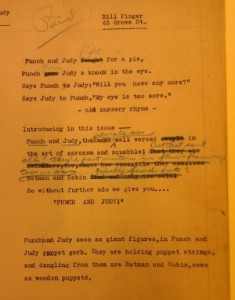


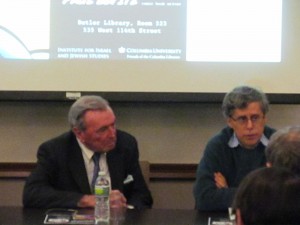
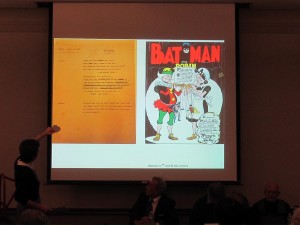
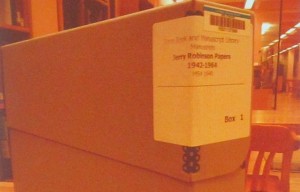
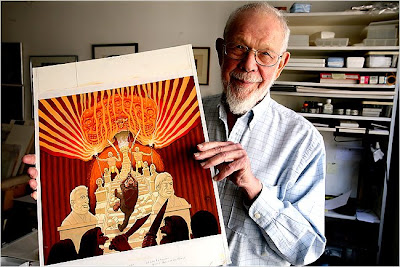
I would love to hear that he continues to work because he loves it, not because he can’t afford to retire.
A belated happy birthday to Mr. Jaffee!
Happy Birthday, Mr. Jaffee. I’ve enjoyed your work for decades. Besides the Mad fold-ins, Al also did quite a number of “Snappy Answers To Stupid Questions”, which I always thought were downright hilarious.
Once again, Happy 95th, sir!